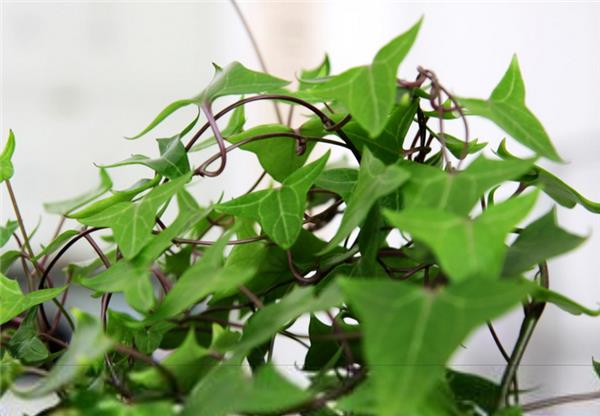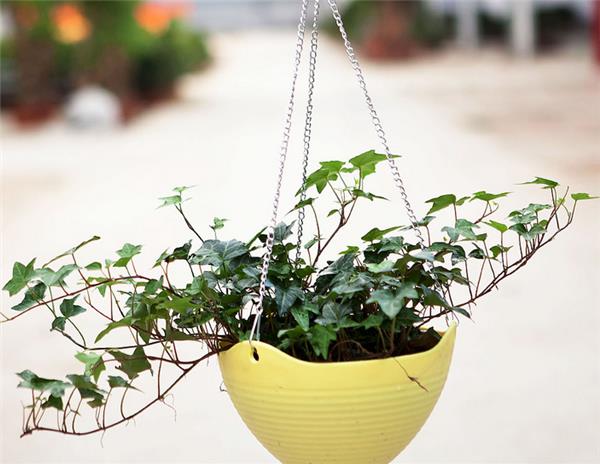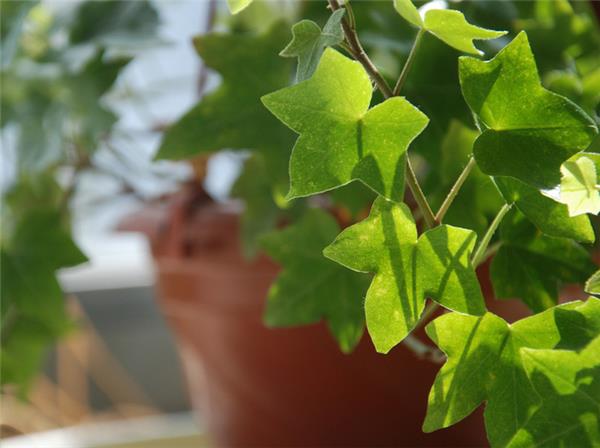How to raise ivy
Ivy is now a popular indoor plant, can be in the living room, study or bedroom, can purify indoor air, so how to raise ivy?

How to raise ivy
1. Simple and extensive management
The cultivation and management of ivy is simple and extensive, but it needs to be planted in a place with moist soil and good air circulation. Transplantation can be carried out in early autumn or late spring and need to be pruned after planting to promote branching.
Many places in the south are planted in the shade of the garden, making it naturally prostrate on the ground or on the rockery. Many potted plants in the north, potted plants can bind a variety of brackets, traction plastic surgery, summer maintenance in the shade, winter into the greenhouse overwintering, indoor to maintain the humidity of the air, not too dry, but the pot soil should not be too wet.
2. Propagation with seeds, cuttings and striping
Seed propagation: harvest when the fruit is ripe, after stacking, soaking and kneading, ghost seed washing and drying, sowing, damp sand storage, sowing in the next spring, covering soil 1cm after sowing, covering grass for moisturizing and moisturizing. The seedlings were unearthed and shaded in a shed, and large seedlings were cultivated after transplanting or fixing seedlings in the spring of the second year.
Pry propagation: it is easy to survive with twigs with air roots in the growing season, close with plastic film arch shed and shade, keeping the space temperature 80% Mel 90%, but the bed soil should not be too wet, lest the cuttings rot, and it can take about 30 days to take root.
Striping propagation: carried out in spring and autumn, using wavy striping method, after the buried part is cut around, it is very easy to take root.

3. The temperature should be suitable.
Ivy likes warmth, and the suitable temperature for growth is 20 ℃-25 ℃. It is afraid of heat and is not resistant to cold.
Therefore, when placed in indoor maintenance, attention should be paid to ventilation and cooling in summer, and the room temperature should be kept above 10 ℃ in winter, and the lowest should not be less than 5 ℃.
4. the amount of light should be appropriate.
Ivy is light-loving and shade-tolerant. Under semi-light conditions, the internodes are shorter, the leaf shape is the same, and the leaf color is bright, so it is appropriate to culture in a bright indoor light. If you can put outdoor shade for a period of time in spring and autumn, so that you can see more sunshine in the morning and evening, then the vitality will be exuberant and the leaves will be green. However, we should pay attention to prevent the direct light, otherwise it is easy to cause sunburn.

5. Watering should be moderate.
Watering in the growing season should be dry and wet, and the basin soil should not be too wet, otherwise it is easy to cause rotten roots and fallen leaves. The room temperature is low in winter, especially to control watering and keep the basin soil slightly wet.
The northern winter climate is dry, it is best to spray Duchuan once a week with water close to room temperature, in order to maintain air humidity, the plant appears alive, the leaf color is green and shiny.

6. Fertilization should be reasonable.
In order to cultivate ivy in the family, the basin soil should be composed of Sichuan rotten leaves or charcoal soil mixed with river sand and a small amount of bone powder, and thin pancake fertilizer and water should be applied once every 2-3 weeks in the growing season.
Do not apply fertilizer in summer and winter. Do not apply nitrogen fertilizer when fertilizing, otherwise, the patterns and patches on the leaves of mosaic varieties will fade to green. The suitable ratio of nitrogen, phosphorus and potassium is 1:1:1.
During the peak growing season, the leaves are sprayed with 0.2% potassium dihydrogen phosphate once or twice, which will make the leaves look more beautiful. However, attention should be paid to avoid contaminating the leaves when applying liquid fertilizer, so as not to cause the leaves to scorch.
Related
- Wuhan Hospital Iron Tree Blooming Result Was Instantly Frightened by the Gardener Master
- Which variety of camellia is the most fragrant and best? Which one do you like best?
- What is the small blue coat, the breeding methods and matters needing attention of the succulent plant
- Dormancy time and maintenance management of succulent plants during dormancy
- Minas succulent how to raise, Minas succulent plant pictures
- What are the varieties of winter succulent plants
- How to raise succulent plants in twelve rolls? let's take a look at some experience of breeding twelve rolls.
- Attention should be paid to water control for succulent plants during dormant period (winter and summer)
- Watering experience of twelve rolls of succulent plants
- Techniques for fertilizing succulent plants. An article will let you know how to fertilize succulent plants.



